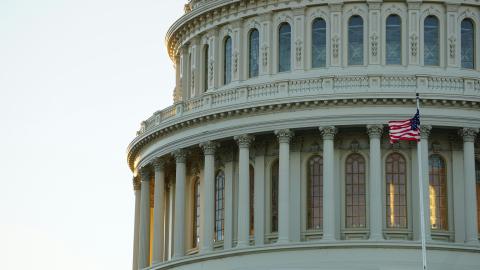Although many in the national media and the parties are treating the 2024 presidential nomination processes as a done deal, the thing that will make this year's Super Tuesday most meaningful are the number of congressional races that will be decided in Republican and Democratic primaries across the US.
Five states are conducting congressional primaries on Tuesday, March 5: Alabama, Arkansas, California, North Carolina, and Texas. In total, this accounts for 115 congressional seats or approximately 26% of seats in the US House. This does not include US Senate races.
In most cases, the congressional districts are so safe for one party or the other that nearly a quarter of the House's delegation will be decided on March 5.
Take Alabama as an example. Republicans have such a tremendous advantage in the state that all but one seat is held by a member of the party, and until a 2023 court decision, none of the seats were remotely competitive.
As of 2022, the Cook Partisan Voting Index (CPVI) ranged Alabama's districts from +14 for the single Democratic district to +33 in the state's 4th district.
There is an opportunity for the second congressional district to be more competitive after a court order forced the state to redraw the district's lines to strengthen the voting power of black residents who comprise nearly half of the district's voting age population.
Still, that is 1 out of 7 districts.
The same can be said for Arkansas, where the lowest CPVI is in the state's second congressional district at +9 as of the 2022 midterm elections. In the 2022 general election, incumbent US Rep. French Hill won re-election easily with 60% of the vote.
It doesn't matter who advances to the November elections, the most critical electoral decisions in Arkansas will be made in the GOP primaries across the state.
Only 3 of the 14 congressional districts in North Carolina have a CPVI at or below +5 for either major party. In November 2022, 4 districts had winners who won with less than 55% of the vote (1, 6, 11, and 13) -- which doesn't necessarily mean the race was that competitive.
One thing these states, along with Texas, have in common is the use of partisan primaries. This means voters have to choose between a Republican or Democratic ballot -- a decision that will mean the difference between a meaningful vote and sacrificing one's voting power.
Fortunately, none of these states leave out independent voters in congressional primaries. Even in North Carolina, where the parties can decide who is allowed to participate in their primaries, registered unaffiliated voters can pick between a Republican or Democratic ballot.
However, it is important for voters to look at how these electoral districts are drawn, what the electoral demographics look like, and where their vote is going to matter.
California is the only state hosting congressional primaries on March 5 that has a nonpartisan primary system for state and non-presidential federal elections, meaning all voters and candidates (regardless of party) participate on a single primary ballot.
Under California's system, the top two vote-getters move on to the general election.
The Golden State also has the most competitive congressional elections compared to the other states holding contests on Super Tuesday -- not just in terms of competition between the Republican and Democratic Parties, but competition for voters.
Ten districts in 2022 had a CPVI of +5 or less for one party or the other. However, the CPVI doesn't account for how California changed the way people can view what competition means in elections. It's not just about R v D, but who has appeal beyond their party.
The nonpartisan primary can advance two candidates from the same party in districts in which the demographics heavily favor one party, like in California's 34th district in Las Angeles County where over 60% of registered voters are Democrats.
Under a partisan primary system, a Democrat and a Republican would advance in a district where the Democrat would easily win. Prior to the passage of nonpartisan primaries, a Democrat would win by a 30-point (or more) margin.
But in 2022, two Democrats advanced under the nonpartisan system, and what separated them as candidates made the difference. The race between incumbent US Rep. Jimmy Gomez and David Kim ended with Gomez winning with 51.2% of the vote.
In a district in which a quarter of the registered voting population is independent, voters outside the Democratic Party can have a tremendous impact on the outcome. And this is the case in most districts that produce D v. D or R v. R elections.
ALSO READ: 5 Races in California Where Independent Voters May Decide the Outcome
Granted, there are still many districts that will produce a D vs. R contest that will not be competitive for one side or the other because of how electoral demographics work in those districts. However, the nonpartisan primary is a much different experience than in states with partisan primary systems.
Partisan primaries continue to ensure that party favorites and candidates who appeal to a marginal percentage of voters in low-turnout primary elections win most, if not all elections outright well ahead of November.
